 | TODAY IN SCIENCE HISTORY
NEWSLETTER - 22 JUNE |
 | "To speculate without facts is to attempt to enter a house of which one has not the key, by wandering aimlessly round and round, searching the walls and now and then peeping through the windows. Facts are the key." - Sir Julian Huxley, English biologist and writer (born 22 Jun 1887)  |
 | "Psychologists must cease to be content with the sterile and narrow conception of their science as the science of consciousness, and must boldly assert its claim to be the positive science of mind in all its aspects and modes of functining, or, as I would prefer to say, the positive science of conduct or behavior." - William McDougall, English-American psychologist (born 22 Jun 1871)  |
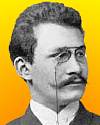 | "The views of space and time which I wish to lay before you have sprung from the soil of experimental physics, and therein lies their strength. They are radical. Henceforth space by itself, and time by itself, are doomed to fade away into mere shadows, and only a kind of union of the two will preserve an independent reality." - Hermann Minkowski, Russian-German mathematician (born 22 Jun 1864)  |
| Before you look at today's web page, see if you can answer some of these questions about the events that happened on this day. Some of the names are very familiar. Others will likely stump you. Tickle your curiosity with these questions, then check your answers on today's web page. |
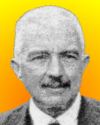 |  Filippo Silvestri, born 22 Jun 1873, was an Italian entomologist, best remembered for his pioneering work in polyembryony. During the late 1930s Silvestri discovered that this type of reproduction occurs in the insect species Litomatix truncatellus. Filippo Silvestri, born 22 Jun 1873, was an Italian entomologist, best remembered for his pioneering work in polyembryony. During the late 1930s Silvestri discovered that this type of reproduction occurs in the insect species Litomatix truncatellus.
 What is polyembryony? |
 |  On 22 Jun 1864, a German mathematician was born. By 1907, he realised that the work of Lorentz and Einstein could be best understood in a non-euclidean space. He considered space and time, which were formerly thought to be independent, to be coupled together in a four-dimensional "space-time continuum". This four-dimensional space is now known by his name. On 22 Jun 1864, a German mathematician was born. By 1907, he realised that the work of Lorentz and Einstein could be best understood in a non-euclidean space. He considered space and time, which were formerly thought to be independent, to be coupled together in a four-dimensional "space-time continuum". This four-dimensional space is now known by his name.
 Can you name this man? |
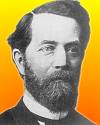 |  A German mathematician (1849-1925) studied of the properties of a space that are invariant under a given group of transformations, known as the Erlanger Programm, and profoundly influenced mathematical development. He created a certain "bottle", a one-sided closed surface, which cannot be constructed in Euclidean space. It is best pictured as a cylinder looped back through itself to join with its other end. The "bottle" is known by his name. A German mathematician (1849-1925) studied of the properties of a space that are invariant under a given group of transformations, known as the Erlanger Programm, and profoundly influenced mathematical development. He created a certain "bottle", a one-sided closed surface, which cannot be constructed in Euclidean space. It is best pictured as a cylinder looped back through itself to join with its other end. The "bottle" is known by his name.  Can you name this man? Can you name this man? |
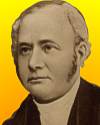 |  Thomas Edmondson (1792-1851) was an English inventor whose ticket printing and numbering machine pioneered a system of fare collection in the development of the railways. He evolved a process for preparing receipts in advance, serial numbering all the tickets (for accountability of monies collected), and inventing a basic stamping system on wooden blocks. Edmondson's early wooden dating presses were developed into iron ones and mass produced. By 1843, twenty-seven English companies, and the Paris and Rouen railway were using the system, which had now become the standard one to adopt. Thomas Edmondson (1792-1851) was an English inventor whose ticket printing and numbering machine pioneered a system of fare collection in the development of the railways. He evolved a process for preparing receipts in advance, serial numbering all the tickets (for accountability of monies collected), and inventing a basic stamping system on wooden blocks. Edmondson's early wooden dating presses were developed into iron ones and mass produced. By 1843, twenty-seven English companies, and the Paris and Rouen railway were using the system, which had now become the standard one to adopt.
 What circumstances prompted his invention? What circumstances prompted his invention? |

|  In 1633, a scientist was forced by the Inquisition to "abjure, curse, and detest" his Copernican heliocentric views. "I, ...do swear that I have always believed, do now believe and, with God's aid shall believe hereafter, all that which is taught and preached by the ... church. I must wholly forsake the false opinion that the sun is the center of the world and moves not, and that the earth is not the center of the world and moves...." He was then condemned to the "formal prison of the Holy Office" for an undetermined amount of time which would be served at the pleasure of his judges, and required to repeat the seven penitential psalms once a week for three years. The next day the Pope specified the prison sentence should be house arrest. In 1633, a scientist was forced by the Inquisition to "abjure, curse, and detest" his Copernican heliocentric views. "I, ...do swear that I have always believed, do now believe and, with God's aid shall believe hereafter, all that which is taught and preached by the ... church. I must wholly forsake the false opinion that the sun is the center of the world and moves not, and that the earth is not the center of the world and moves...." He was then condemned to the "formal prison of the Holy Office" for an undetermined amount of time which would be served at the pleasure of his judges, and required to repeat the seven penitential psalms once a week for three years. The next day the Pope specified the prison sentence should be house arrest.
 Can you name this scientist? |
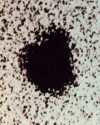
|  On 22 Jun of a certain year, evidence of the first moon of Pluto was discovered by astronomer James W. Christy. The moon was named Charon, after the boatman in Greek mythology who took the souls of the dead across the River Styx to Pluto's underworld. On 22 Jun of a certain year, evidence of the first moon of Pluto was discovered by astronomer James W. Christy. The moon was named Charon, after the boatman in Greek mythology who took the souls of the dead across the River Styx to Pluto's underworld.
 In what decade was the first moon of Pluto discovered? |
When you have your answers ready to all the questions above, you'll find all the information to check them, and more, on the June 22 web page of Today in Science History. Or, try this link first for just the brief answers.
Fast answers for the previous newsletter for June 21: helium; Poisson; �ngstr�m; boron; Cyrus Hall McCormick; the decade including the year 1948; 36 cars each carried 60; passengers = 2160.
|
 If you enjoy this newsletter, the website, or wish to offer encouragement or ideas, please send feedback by using your mail reader Reply button. If you enjoy this newsletter, the website, or wish to offer encouragement or ideas, please send feedback by using your mail reader Reply button. |
--
If you do not want to receive any more newsletters,
Unsubscribe To update your preferences and to unsubscribe visit
this link 






 Filippo Silvestri, born 22 Jun 1873, was an Italian entomologist, best remembered for his pioneering work in polyembryony. During the late 1930s Silvestri discovered that this type of reproduction occurs in the insect species Litomatix truncatellus.
Filippo Silvestri, born 22 Jun 1873, was an Italian entomologist, best remembered for his pioneering work in polyembryony. During the late 1930s Silvestri discovered that this type of reproduction occurs in the insect species Litomatix truncatellus. What is polyembryony?
What is polyembryony?
 On 22 Jun 1864, a German mathematician was born. By 1907, he realised that the work of Lorentz and Einstein could be best understood in a non-euclidean space. He considered space and time, which were formerly thought to be independent, to be coupled together in a four-dimensional "space-time continuum". This four-dimensional space is now known by his name.
On 22 Jun 1864, a German mathematician was born. By 1907, he realised that the work of Lorentz and Einstein could be best understood in a non-euclidean space. He considered space and time, which were formerly thought to be independent, to be coupled together in a four-dimensional "space-time continuum". This four-dimensional space is now known by his name. Can you name this man?
Can you name this man?
 A German mathematician (1849-1925) studied of the properties of a space that are invariant under a given group of transformations, known as the Erlanger Programm, and profoundly influenced mathematical development. He created a certain "bottle", a one-sided closed surface, which cannot be constructed in Euclidean space. It is best pictured as a cylinder looped back through itself to join with its other end. The "bottle" is known by his name.
A German mathematician (1849-1925) studied of the properties of a space that are invariant under a given group of transformations, known as the Erlanger Programm, and profoundly influenced mathematical development. He created a certain "bottle", a one-sided closed surface, which cannot be constructed in Euclidean space. It is best pictured as a cylinder looped back through itself to join with its other end. The "bottle" is known by his name.  Can you name this man?
Can you name this man? 
 Thomas Edmondson (1792-1851) was an English inventor whose ticket printing and numbering machine pioneered a system of fare collection in the development of the railways. He evolved a process for preparing receipts in advance, serial numbering all the tickets (for accountability of monies collected), and inventing a basic stamping system on wooden blocks. Edmondson's early wooden dating presses were developed into iron ones and mass produced. By 1843, twenty-seven English companies, and the Paris and Rouen railway were using the system, which had now become the standard one to adopt.
Thomas Edmondson (1792-1851) was an English inventor whose ticket printing and numbering machine pioneered a system of fare collection in the development of the railways. He evolved a process for preparing receipts in advance, serial numbering all the tickets (for accountability of monies collected), and inventing a basic stamping system on wooden blocks. Edmondson's early wooden dating presses were developed into iron ones and mass produced. By 1843, twenty-seven English companies, and the Paris and Rouen railway were using the system, which had now become the standard one to adopt.  What circumstances prompted his invention?
What circumstances prompted his invention? 
 In 1633, a scientist was forced by the Inquisition to "abjure, curse, and detest" his Copernican heliocentric views. "I, ...do swear that I have always believed, do now believe and, with God's aid shall believe hereafter, all that which is taught and preached by the ... church. I must wholly forsake the false opinion that the sun is the center of the world and moves not, and that the earth is not the center of the world and moves...." He was then condemned to the "formal prison of the Holy Office" for an undetermined amount of time which would be served at the pleasure of his judges, and required to repeat the seven penitential psalms once a week for three years. The next day the Pope specified the prison sentence should be house arrest.
In 1633, a scientist was forced by the Inquisition to "abjure, curse, and detest" his Copernican heliocentric views. "I, ...do swear that I have always believed, do now believe and, with God's aid shall believe hereafter, all that which is taught and preached by the ... church. I must wholly forsake the false opinion that the sun is the center of the world and moves not, and that the earth is not the center of the world and moves...." He was then condemned to the "formal prison of the Holy Office" for an undetermined amount of time which would be served at the pleasure of his judges, and required to repeat the seven penitential psalms once a week for three years. The next day the Pope specified the prison sentence should be house arrest. Can you name this scientist?
Can you name this scientist?
 On 22 Jun of a certain year, evidence of the first moon of Pluto was discovered by astronomer James W. Christy. The moon was named Charon, after the boatman in Greek mythology who took the souls of the dead across the River Styx to Pluto's underworld.
On 22 Jun of a certain year, evidence of the first moon of Pluto was discovered by astronomer James W. Christy. The moon was named Charon, after the boatman in Greek mythology who took the souls of the dead across the River Styx to Pluto's underworld. In what decade was the first moon of Pluto discovered?
In what decade was the first moon of Pluto discovered? If you enjoy this newsletter, the website, or wish to offer encouragement or ideas, please send feedback by using your mail reader Reply button.
If you enjoy this newsletter, the website, or wish to offer encouragement or ideas, please send feedback by using your mail reader Reply button. 
Δεν υπάρχουν σχόλια:
Δημοσίευση σχολίου